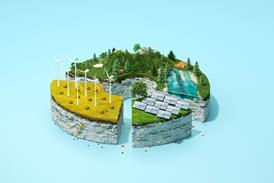How ice crystals create optical illusions

From light pillars and sun haloes to false suns, explore the mysterious effects ice crystals can produce when they interact with light.
If ice crystallises slowly, a single crystal can form. Crystals like this are often produced in the atmosphere but can have many different shapes. Some make columns, some make plates and others form the familiar snowflake. What all of these have in common is that their shapes are based on hexagons.
It is ice crystals like these that cause interesting visual effects when they interact with light from the sun. Light pillars, sun haloes and even parhelia or ‘false suns’ – read on to find out what’s behind these optical illusions in the sky.
Thanks for using Education in Chemistry. You can view one Education in Chemistry article per month as a visitor.

Register for Teach Chemistry for free, unlimited access
Registration is open to all teachers and technicians at secondary schools, colleges and teacher training institutions in the UK and Ireland.
Get all this, plus much more:
- unlimited access to resources, core practical videos and Education in Chemistry articles
- teacher well-being toolkit, personal development resources and online assessments
- applications for funding to support your lessons
Already a Teach Chemistry member? Sign in now.
Not eligible for Teach Chemistry? Sign up for a personal account instead, or you can also access all our resources with Royal Society of Chemistry membership.


